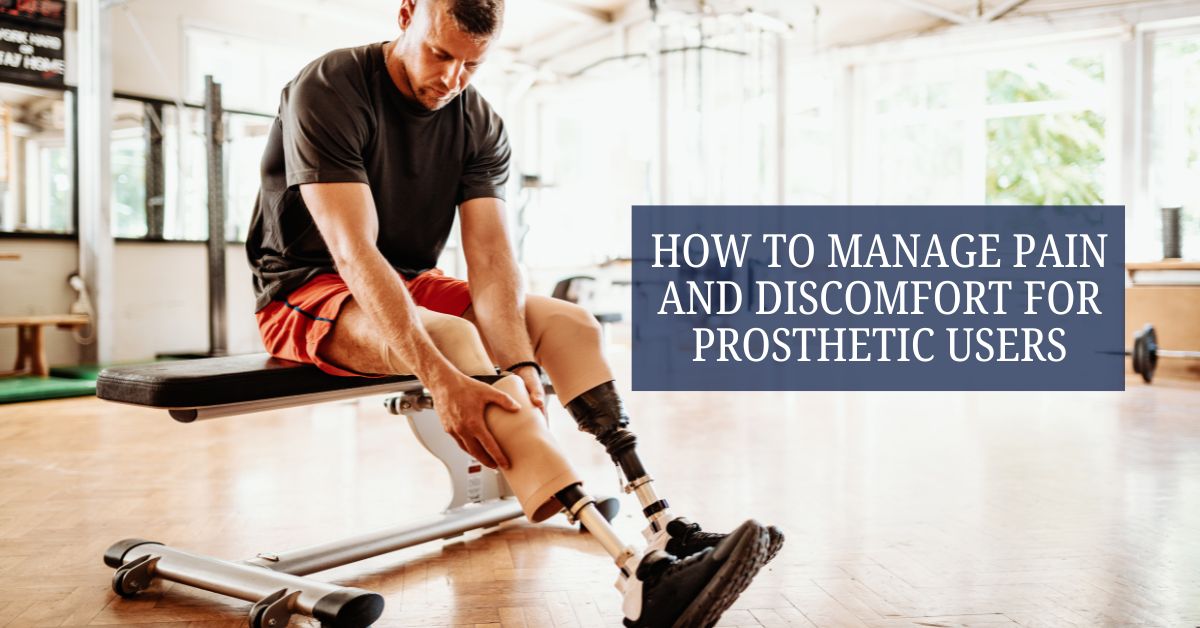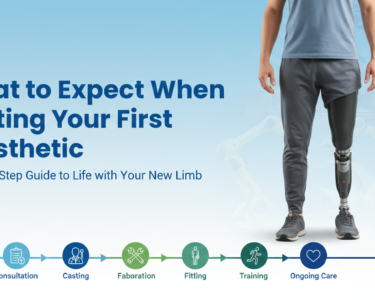For many amputees, transitioning to a prosthetic limb is a journey filled with new experiences, both physically and emotionally. While prosthetics offer the ability to regain mobility and independence, they can also bring discomfort and pain if not managed properly. The good news is that with the right approach, most of these issues can be minimized or even prevented. If you’re struggling with pain while using a prosthetic, here are some practical and effective ways to manage it.
1. Ensure a Proper Prosthetic Fit
One of the most common causes of discomfort is an ill-fitting prosthesis. If your prosthetic socket is too tight, too loose, or causes pressure in certain areas, it can lead to pain, skin irritation, and even sores. Regular check-ups with your prosthetist are essential to ensure that your device fits correctly. If you notice pain after prolonged use or swelling in your residual limb, it may be time for an adjustment.
2. Gradual Adaptation and Break-in Period
Wearing a prosthetic limb for the first time requires patience. Your body needs time to adjust to the new weight, pressure, and movement. Start by wearing it for short periods and gradually increase the duration as your body adapts. Rushing into full-time wear can lead to soreness, blisters, and unnecessary strain on your residual limb.
3. Maintain Skin and Residual Limb Health
Skin irritation and infections can be major sources of discomfort. Here’s how to keep your residual limb healthy:
- Wash your residual limb daily with mild soap and warm water.
- Dry thoroughly before wearing your prosthetic to prevent skin breakdown.
- Check for redness, blisters, or pressure sores after removing your prosthesis.
- Use a good-quality prosthetic liner and change it regularly. If you notice persistent skin issues, consult your doctor or prosthetist for guidance on protective creams or alternative materials.
4. Use Proper Cushioning and Liners
A well-cushioned prosthetic liner can make a huge difference in comfort. Gel liners, soft socks, and custom padding can reduce pressure points and friction, helping to distribute weight more evenly. Some days, your limb may swell due to temperature changes or activity levels, so adjusting your liner thickness can help maintain comfort.
5. Manage Swelling Effectively
Swelling (also known as edema) is common in new prosthetic users. It can make your limb feel tight and uncomfortable in the socket. To manage swelling:
- Elevate your limb when resting.
- Use a compression sock if recommended by your prosthetist.
- Avoid sitting or standing in the same position for long periods.
- Perform gentle limb massages to improve circulation.
6. Practice Proper Weight Distribution
Uneven weight distribution can lead to pain in the residual limb, hips, or lower back. Learning to walk correctly with a prosthesis takes time and guidance. Working with a physical therapist can help you develop proper posture, gait, and balance techniques to reduce strain on your body.
7. Pain Management Techniques
If discomfort persists, consider pain management strategies that work best for you:
- Heat or cold therapy: Warm packs can help relax muscles, while cold packs can reduce inflammation.
- Massage therapy: Helps with circulation and muscle relaxation.
- Stretching and strengthening exercises: Keep muscles flexible and reduce stiffness.
- Over-the-counter pain relievers: Can be useful for occasional discomfort but should not be relied on for long-term pain management.
- Mindfulness and relaxation techniques: Meditation, deep breathing, or yoga can help manage chronic pain and stress.
8. Address Phantom Limb Pain
Many amputees experience phantom limb pain, which feels like discomfort or sensations in the missing limb. While this is a normal neurological response, it can be distressing. Some effective ways to manage phantom limb pain include:
- Mirror therapy to rewire brain responses.
- Massaging the residual limb.
- Using prosthetic socks to create gentle pressure.
- Consulting a specialist for medications or therapy if pain is severe.
9. Stay Active but Listen to Your Body
Regular movement and exercise strengthen the muscles that support your prosthetic use. However, overdoing it can cause strain and fatigue. Find a balance by engaging in low-impact activities such as swimming, cycling, or guided strength training to improve endurance and mobility without excessive stress on your residual limb.
10. Seek Professional Help When Needed
If pain persists despite these strategies, don’t hesitate to seek professional help. Your prosthetist, physical therapist, or doctor can provide personalized solutions to address discomfort. New advancements in prosthetic technology, offered by trusted prosthetic limb manufacturer in India, provide improved comfort and functionality through innovative socket designs, better weight distribution, and enhanced materials.
Conclusion
Adjusting to life with a prosthetic limb takes time, patience, and the right approach to pain management. By ensuring a proper fit, maintaining limb health, and using techniques to manage discomfort, prosthetic users can enjoy greater comfort and improved mobility. The key is to listen to your body, seek professional advice when needed, and adopt a proactive approach to your well-being. With the right care and support, living with a prosthesis can become a seamless part of daily life, allowing you to move forward with confidence and comfort.
Disclaimer: The information provided in this article is for general knowledge and educational purposes only. It should not be considered medical advice, diagnosis, or treatment. Prosthetic solutions vary based on individual needs, medical conditions, and professional recommendations. Always consult with a certified prosthetist, healthcare provider, or medical professional for personalized advice and the best prosthetic options for your specific situation.








